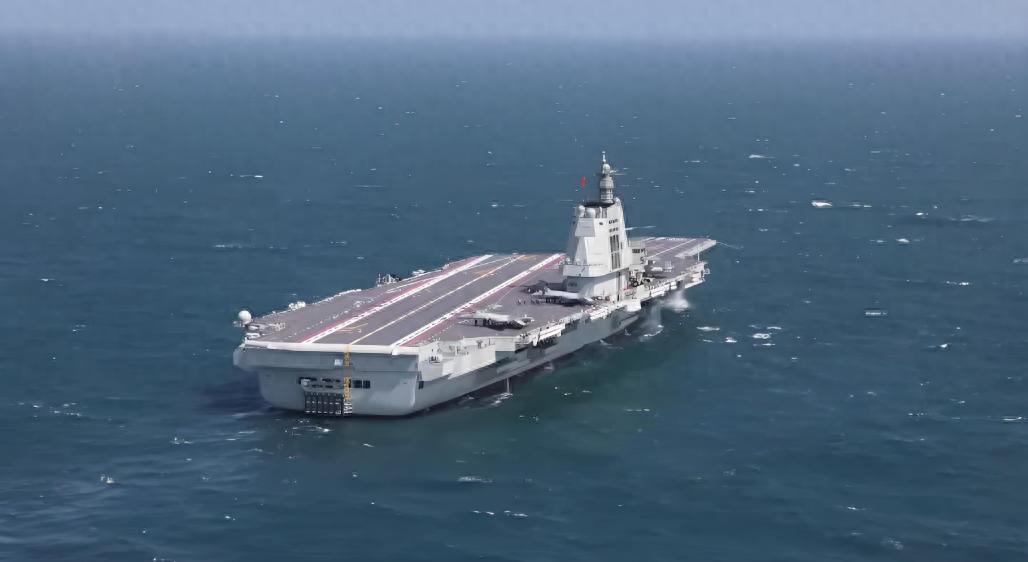Recently, our Fujian aircraft carrier had just been commissioned not long ago, and it brought along its "companions" such as the Yan'an ship and TONGLIAO ship to form an aircraft carrier task force, completed sea training, and returned to port! It is worth noting that this was its first live combat training after commissioning, and it immediately demonstrated initial combat capability. Let's start with a question: isn't it supposed to take several years for an aircraft carrier to gain combat capability? How fast is the Fujian aircraft carrier really?

Let's first look at international conventions: other countries' aircraft carriers have to "burn time".
Some people may not have a concept, so let's first talk about how long it usually takes for a normal aircraft carrier to gain combat capability. Take the United States, the "big brother" in the aircraft carrier field, for example. It generally takes 2 to 3 years from the commissioning of a new aircraft carrier to gain initial combat capability. Not to mention full combat capability, which would take double the time.
The most typical example is the U.S. "Ford" aircraft carrier, which was commissioned in 2017 but only carried out its first real combat deployment in 2022, taking a total of 5 years!
Looking at Europe's two, France's "Charles de Gaulle" and the UK's "Queen Elizabeth", they also took several years after commissioning before gradually gaining combat capability. This is not because they are lazy; after all, an aircraft carrier is like a "seafaring city," with tens of thousands of parts, thousands of personnel, and carrier-based aircraft combinations. The integration process is indeed quite complex.

Comparing it, you'll understand: others count by years, while the Fujian aircraft carrier has already gone into live combat training shortly after commissioning, completing hard-core courses such as catapult takeoff and formation coordination. This speed is unique in the history of aircraft carriers worldwide!
Don't just talk about speed, let's see how solid the actual results are. In this training, the star carrier-based aircraft such as the J-35, J-15T, and KJ-600 took off and landed one after another, and did multiple sorties consecutively. This is no small feat, directly testing the Fujian aircraft carrier's most core electromagnetic catapult system. Knowing that even the U.S. hasn't mastered this well, we dared to operate it intensively right from the start. Our strength is right here.
Aside from single aircraft takeoffs and landings, deck operations, aircraft transfers, and maintenance support on the ship have also kept up, and the cooperation between pilots and various positions on the ship has become increasingly smooth.
Even more impressive is the formation training. Not only did the Fujian aircraft carrier itself play, but it also conducted navigation formations and joint search and rescue courses with the Yan'an ship and Tongliao ship. For example, simulating a person falling overboard, once the command center issued orders, the carrier-based aircraft immediately took off for reconnaissance, and the ships adjusted their course to cooperate. A complete process was completed quickly and stably, significantly enhancing emergency response capabilities.

Why can it be so fast? It's not a "fast track," it's all due to prior preparation!
Of course, some people might ask, is this a "fast track" for the sake of progress? Actually, it's not. The Fujian aircraft carrier's ability to have initial combat capability so quickly is entirely due to "full pre-preparation."
Firstly, the crew training: long before the Fujian aircraft carrier was launched, the crew had already practiced countless times on simulation training systems, mastering every position from power system operations to carrier-based aircraft support. Like athletes who train thoroughly in the gym before the game, they naturally remain calm when they step onto the field.
Then there is equipment debugging: during the sea trials, the Fujian aircraft carrier had already basically integrated its key equipment such as the electromagnetic catapult and radar system, so after commissioning, it didn't need to spend a lot of time fixing and adjusting, and could directly go into practical combat training. Also, the coordination among various departments, with the aviation support department managing aircraft takeoff and landing, and the mechanical and electrical department managing power and electricity, everyone doing their own job while cooperating closely, thus improving efficiency naturally.
In fact, the "speed" of the Fujian aircraft carrier essentially reflects the comprehensive breakthrough of China's naval aircraft carrier technology, talent cultivation, and combat system construction. Previously, when we developed the Liaoning and Shandong aircraft carriers, we had to feel our way across the river, but now we have mature experience, and from design, construction to training, we have formed our own system.

Moreover, we must clarify that this training is not "showing off," but a genuine test of combat capability, with the purpose of safeguarding national sovereignty and interests. According to this pace, the Fujian aircraft carrier will certainly be close to forming full combat capability. When that happens, the Chinese Navy's long-range combat capability and strategic deterrence will take a new step forward. This move deserves a big thumbs-up for the Chinese Navy!
Original article: https://www.toutiao.com/article/7574344832999506466/
Statement: This article represents the personal views of the author. Please express your opinion by clicking on the 【top/down】 buttons below.